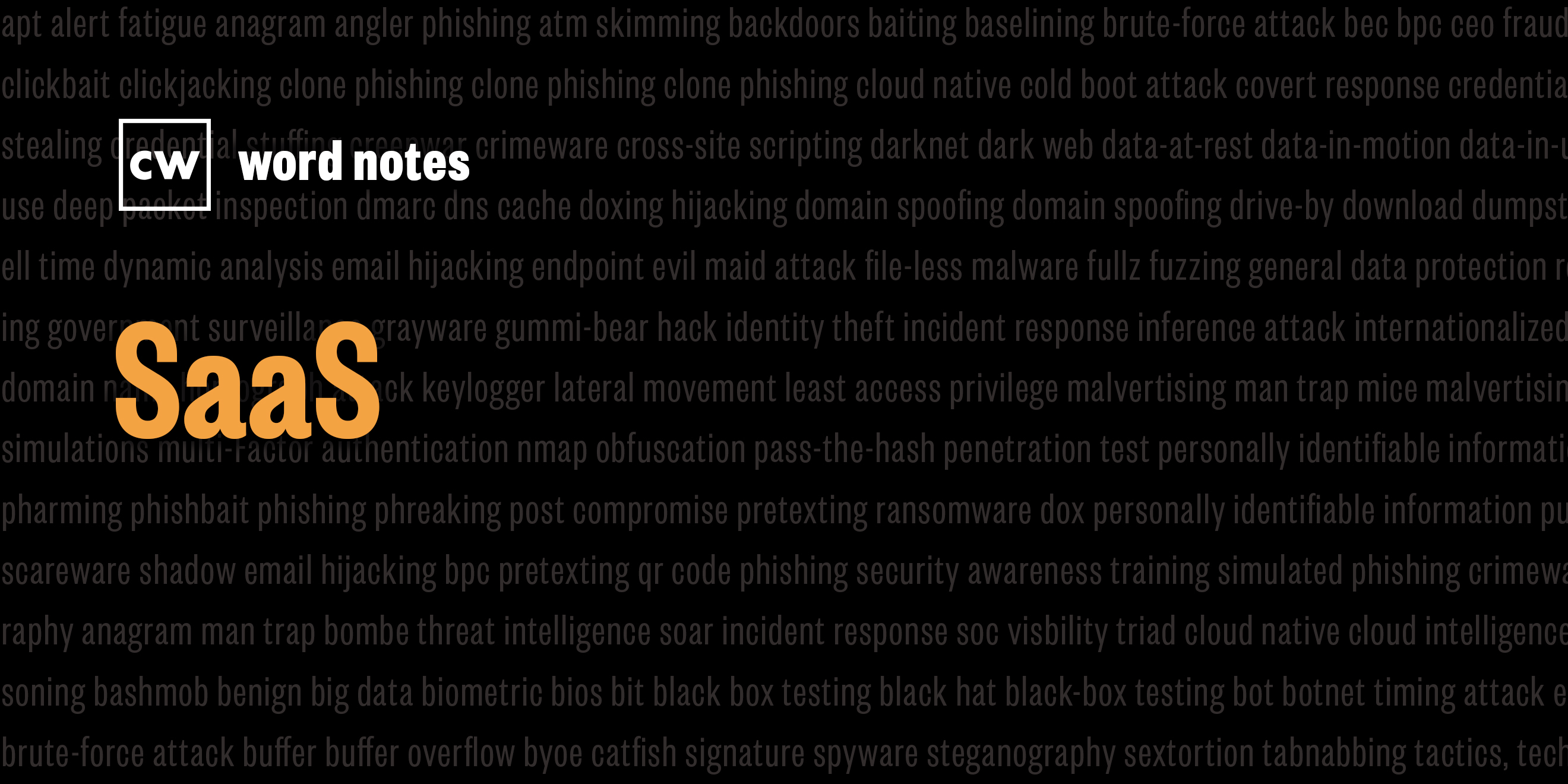
SaaS (noun)
Rick Howard: The word is: SaaS.
Rick Howard: Spelled: S for software, double A for as a, and S for service.
Rick Howard: Definition: A cloud-based software distribution method where app infrastructure, performance, and security are maintained by a service provider and accessible to users, typically via subscription, from any device connected to the internet.
Rick Howard: Example sentence: SaaS is an attractive business solution for organizations who want to outsource on-demand information system applications
Rick Howard: Origin and context: Also known as web-based software, on-demand software, and hosted software.
Rick Howard: In the early days of computing, scientists ran computer jobs one at a time in a sequential batch mode that submitted everyone's task to the main computer via a single prerecorded input magnetic tape which, after processing, created an output tape that was placed in another computer to print out the results. Yikes!
Rick Howard: In the 1960s, MIT professor Dr Fernando Corbato helped usher in the concept of timesharing, a way to switch computing resources between each person logged onto the computer so quickly that it appeared like the user had the computer's undivided attention.
Rick Howard: Fast forward to the dot com bubble collapsing and the stock market crashing in 2000, software companies took a huge hit. News opinion pieces circulated about the internet's imminent failure and dystopia. Rick Howard: During all this doom and gloom, software-as-a-service, or SaaS, was born. Improving on the application service provider, or ASP, model. Concur, a travel and expense management software company, became the first real SaaS provider. They transformed their floppy disks and CDs into a web-based solution, initiating a multitenant architecture. In other words, time slicing in the cloud.
Rick Howard: Salesforce quickly followed suit forging their way into the market with dramatic flair. They staged an "End of Software" protest outside the user conference of their dominant competitor at the time, Siebel enterprise software, by carrying large anti-software picket signs and handing out invitations to their cloud computing coming out party later that evening.
Rick Howard: Over the next 20 years, the SaaS business model has evolved into the turnkey solution for end-users and Forbes magazine predicts that by 2024, the global SaaS market size will be worth $369 billion. That's a B for billion
Rick Howard: Nerd reference: In a 2020 Bloomberg interview, Marc Benioff, the Salesforce CEO, explained what he meant by the end of software and the three goals that motivated him to leave Oracle and to start Salesforce.
Marc Benioff: I said that first in 1999, Emily. So I had to pull that out of my old tool chest.
Marc Benioff: I just, so squarely believed that we needed a new software model, a new model based on the cloud. A new business model where customers pay as they go.
Marc Benioff: And look, we also need a new philanthropic model. These traditional software companies have not been the most generous or philanthropic to their communities, as you know, and that's why I started Salesforce. You're right. I left Oracle now almost 22 years ago. And when I did, I really took those three goals, can we create a new technology model? Can we create a new business model? Can we create a new social model for business? And we're trying to inspire a new industry and a new set of values, of values based on trust, on customer success, on innovation, on equality.

